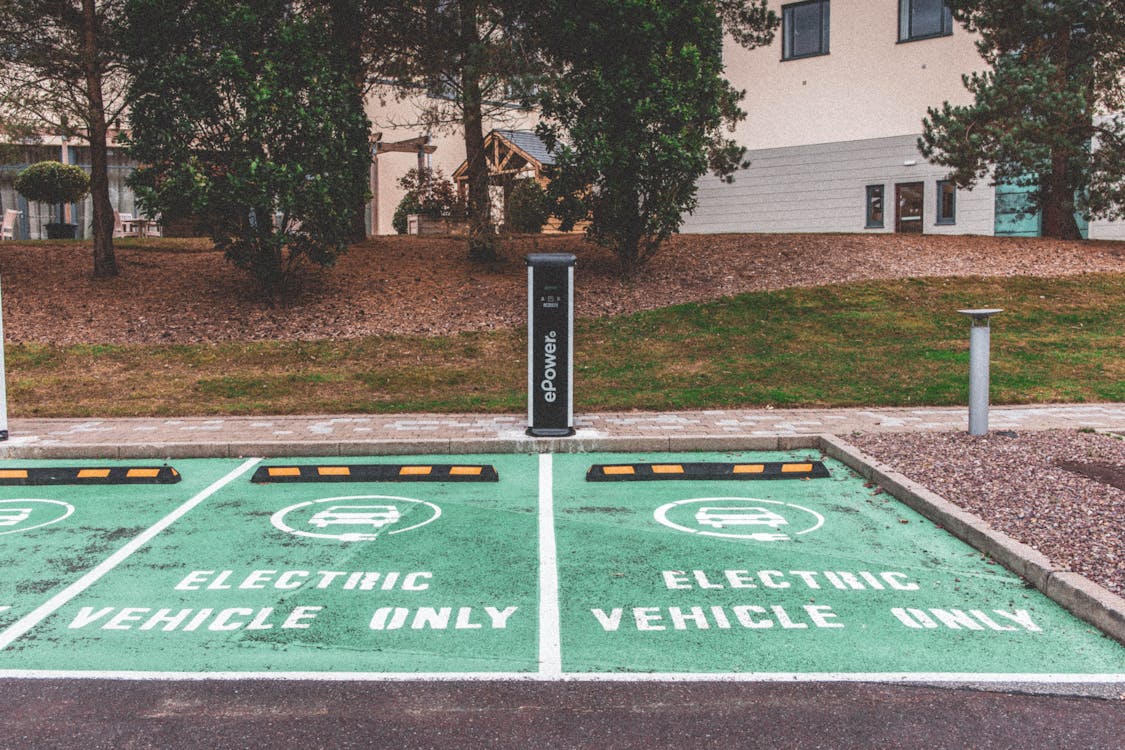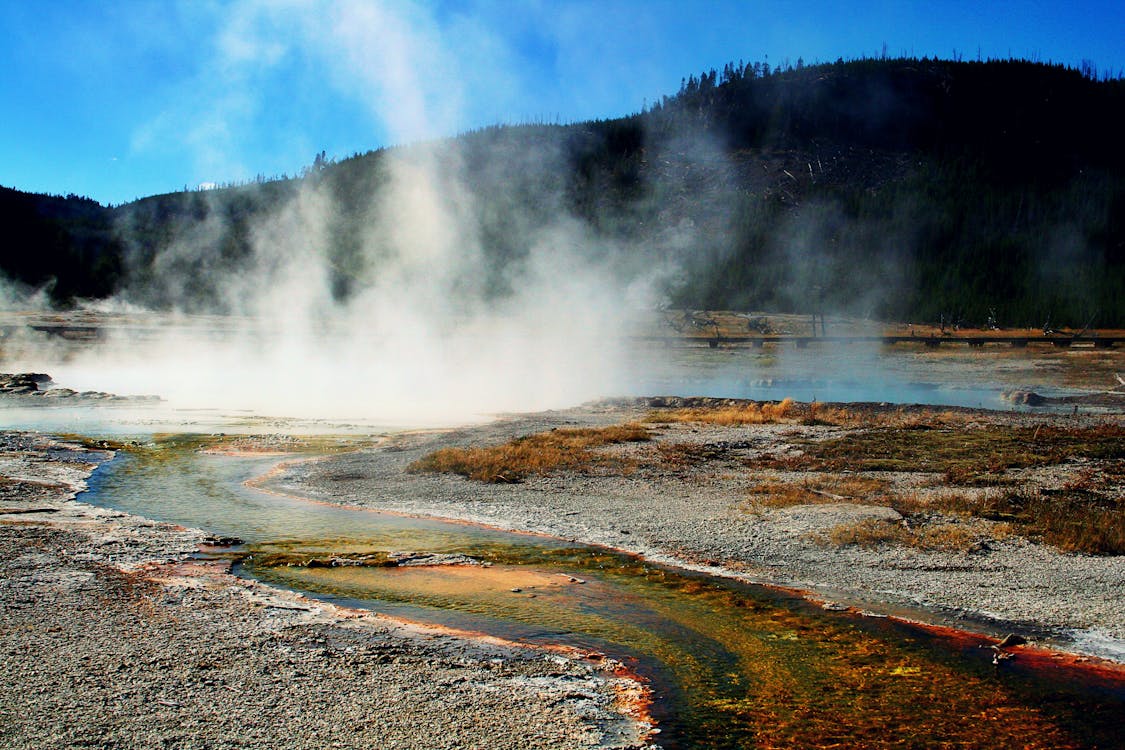Welcome to Climate Tech Pulse, your daily dose of market intelligence helping fuel the fight against climate change. From groundbreaking investments to cutting-edge research, we’re bringing you the latest in climate tech that’s shaping our future.
Don’t miss out on tomorrow’s climate solutions – subscribe now to stay ahead of the curve! https://lnkd.in/dwr7B9XJ
Today’s newsletter:
🔝Today’s Top Story: Diagram, a venture builder and investor based in Montreal, raised $80 million for its ClimateTech Fund, surpassing its original $60 million target.
📊 Today’s Data Point: DOE’s 2024 pathways to commercial liftoff – Advanced Nuclear Report.
🌳 Climate Insider Intelligence: Waste Management – Climate Technology Market Map.
Diagram Raises $80M for ClimateTech Fund to Accelerate Sustainable Innovations, Exceeds Initial Target
Image Credit: ESGtoday
Fundraising Success and Investor Backing
Diagram, a venture builder and investor based in Montreal, raised $80 million for its ClimateTech Fund, surpassing its original $60 million target. The fund is backed by notable LP investors, including Sagard, Investissement Quebec, Export Development Canada, and more, demonstrating strong institutional support for climate solutions. Diagram’s focus is on capital-efficient digital innovations that accelerate sustainability, with a particular emphasis on Quebec-based ventures.
Focus on ClimateTech and Sustainable Ventures
The ClimateTech Fund aims to create and invest in early-stage companies offering innovative solutions to global environmental challenges. Led by Amélie Foz-Couture and Paul Manias, the fund will focus on sectors like electric vehicles (EVs) and digital infrastructure, helping build ventures that align with the global transition to sustainability. Its mission is to drive impactful technologies that address climate change, particularly in areas that show rapid scalability and real-world application.
Early Venture Success and EV Transition
So far, the ClimateTech Fund has launched two key ventures: ReliON, providing software solutions for EV charging infrastructure, and Lyteflo, which focuses on enhancing EV sales through better battery health insights. These ventures are positioned to accelerate the global EV transition, reflecting Diagram’s commitment to supporting impactful, scalable technologies. Read More
Market Movers
- Scope3 has raised $25 million to expand its sustainability efforts beyond media and advertising, now targeting the climate impact of the AI industry using its emissions measurement platform developed from open-source methodology. Read More
- Google has partnered with Kairos Power to deploy small modular nuclear reactors (SMRs), contributing up to 500 MW of clean energy to meet its 24/7 carbon-free energy goal by 2035, while addressing the energy demands of AI and data-intensive operations. Read More
- Aerleum has raised €5.5 million to accelerate the industrialization of its technology, which transforms atmospheric CO₂ and low-carbon hydrogen into synthetic fuels and chemicals, offering hard-to-abate sectors like maritime and aviation a cost-competitive path to decarbonization. Read More
- OroraTech, a Munich-based startup specializing in wildfire detection via space-based thermal-infrared data, has raised €25 million in Series B funding to enhance its wildfire intelligence technology, addressing the growing need for rapid fire detection as climate change intensifies wildfire risks. Read More
- Concretene, a Manchester-based nanomaterial technology company, has raised £3 million to launch its carbon-saving concrete admixture, aiming to reduce emissions in the concrete industry with support from Molten Ventures and LocalGlobe. Read More
Tech Spotlight
University of Washington’s Battery Innovation Lab: Pushing Boundaries in Energy Storage
Source: University of Washington, U.S.
The University of Washington’s Clean Energy Testbeds is launching a new lab dedicated to advancing battery technology. This facility will enable startups and researchers to integrate their innovations into custom-designed pouch cell batteries, addressing a critical gap in battery engineering. These pouch cells are increasingly in demand for applications in electric vehicles, heavy trucking, and consumer electronics, offering flexibility in design and scale.
Commercial Viability
Market Impact:
With growing demand for specialized battery designs, particularly in transportation and electronics, this lab will help bridge the gap between research and commercial deployment. Companies like Group14 and Ecellix, working on advanced battery materials, will benefit from these new capabilities.
Cost-Effectiveness:
The lab’s ability to prototype complete battery systems reduces the cost and time needed to scale up new technologies, making them more commercially viable.
Technical Viability
Technology Challenges:
The facility will address the challenge of integrating battery components into a cohesive system, crucial for improving performance in high-stakes sectors like transportation.
Efficiency Consideration:
By enabling customized designs, the lab helps optimize energy density, safety, and longevity in battery systems, streamlining the path from research to market.
Environmental Viability
Sustainability Alignment:
The lab supports cleaner energy systems by advancing battery technology, helping reduce reliance on fossil fuels in sectors like transportation and renewable energy storage.
Climate Impact:
With more efficient batteries, the lab can contribute to emissions reductions by making electric vehicles and renewable energy storage more practical.
Scaling Potential
Investment Strategies:
The lab will attract investment by offering a testing ground for scalable, market-ready battery solutions, providing startups with a critical resource for growth.
Future Expansion:
This lab is a step toward UW’s larger initiative, Brightwork, which will expand clean energy research capabilities in the future.
Long-Term Implications
Reevaluating Battery Engineering’s Role:
This lab fills a crucial gap in U.S. battery innovation, enabling faster development and commercialization of energy storage solutions.
Strategic Vision for Growth:
Dan Schwartz emphasizes the need for speed in advancing battery tech, positioning this lab as a key player in the clean energy transition. Read More
Policy Pulse
This section includes global updates on climate change policy, governance and regulation.
Europe’s clean energy future hinges on modernizing power grids through unprecedented collaboration and over €584 billion in investments by 2030.
The European Union’s Grid Action Plan, which mandates over €584 billion in investments and fosters cross-border collaboration, is crucial for modernizing power grids to seamlessly integrate renewable energy, bolster energy security, and meet ambitious decarbonization targets by 2030, thereby enhancing Europe’s competitiveness in the global clean energy transition.
Why it Matters: This matters because modernizing Europe’s power grids is essential for effectively integrating renewable energy, enhancing energy security, and achieving climate goals, which collectively drive economic growth and sustainability in the region. Read More
Today’s Climate Data Point
The U.S. Department of Energy (DOE) has published its 2024 update of the Pathways to Commercial Liftoff: Advanced Nuclear report, outlining nuclear energy’s role in U.S. decarbonization. The report highlights the increasing demand for clean, firm power and nuclear’s pivotal position in fulfilling this demand.
Source: DOE’s 2024 Pathways to Commercial Liftoff: Advanced Nuclear Report
Key Findings:
- Rising Demand: To meet net-zero emissions, the U.S. needs 700 to 900 gigawatts (GW) of additional clean firm power, with data centers potentially increasing electricity demand by 20% over the next decade. Nuclear energy is crucial to satisfying this demand.
- Capacity Goals: The U.S. plans to triple its nuclear capacity to 300 GW by 2050, requiring approximately 200 GW from new capacity, primarily at existing or retired reactor sites. New reactors are also feasible at coal plant locations, potentially adding 174 GW.
- Construction Efficiency: Recent projects, such as Vogtle Units 3 and 4, demonstrate potential cost reductions, with Unit 4 built 30% more efficiently and 20% cheaper than Unit 3, indicating future reactors could be built more quickly and affordably.
- Consortium Model: The report suggests a consortium approach for nuclear projects, allowing multiple stakeholders to share costs and risks, making construction more economically viable.
- Decarbonization Strategy: Nuclear power combined with renewables and energy storage is the most cost-effective strategy for grid decarbonization, potentially reducing total system costs by 37%.
Implications:
- Market Dynamics: Nuclear energy’s increasing role is essential for a diversified clean energy mix, necessitating collaboration among government, industry, and investors to scale advanced nuclear technology timely.
Policy Recommendations:
- Encourage Consortiums: Promote consortium models to reduce project costs.
- Maximize Existing Capacity: Focus on developing new nuclear capacity at current reactor and retiring coal plant sites.
- Improve Efficiency: Leverage lessons from projects like Vogtle to enhance future construction efficiency.
Conclusion: The DOE’s 2024 update emphasizes nuclear energy’s critical role in achieving U.S. net-zero emissions. With plans to triple nuclear capacity and robust federal backing, nuclear power is positioned as a cornerstone of the nation’s clean energy strategy.
Climate Insider Analysis: The updated DOE report outlines significant opportunities and challenges for U.S. nuclear energy. As the demand for clean, firm power rises, overcoming cost barriers and improving construction efficiency will be vital. Swift commercialization of advanced nuclear technology is crucial for meeting future electricity demands and climate objectives. Read More
Climate Insider Intelligence: Waste Management – Climate Technology Market Map
This Recycling Week, we focus on waste management—one of the most vital yet overlooked areas of climate technology. Waste goes beyond what we discard; it includes underutilized resources and inefficiencies across every sector.Our waste management market map highlights how startups are turning waste into opportunity through advanced recycling, waste-to-energy solutions, and industrial symbiosis. With the global cost of waste management expected to hit $640 billion by 2050, innovative technologies are crucial. Read More





